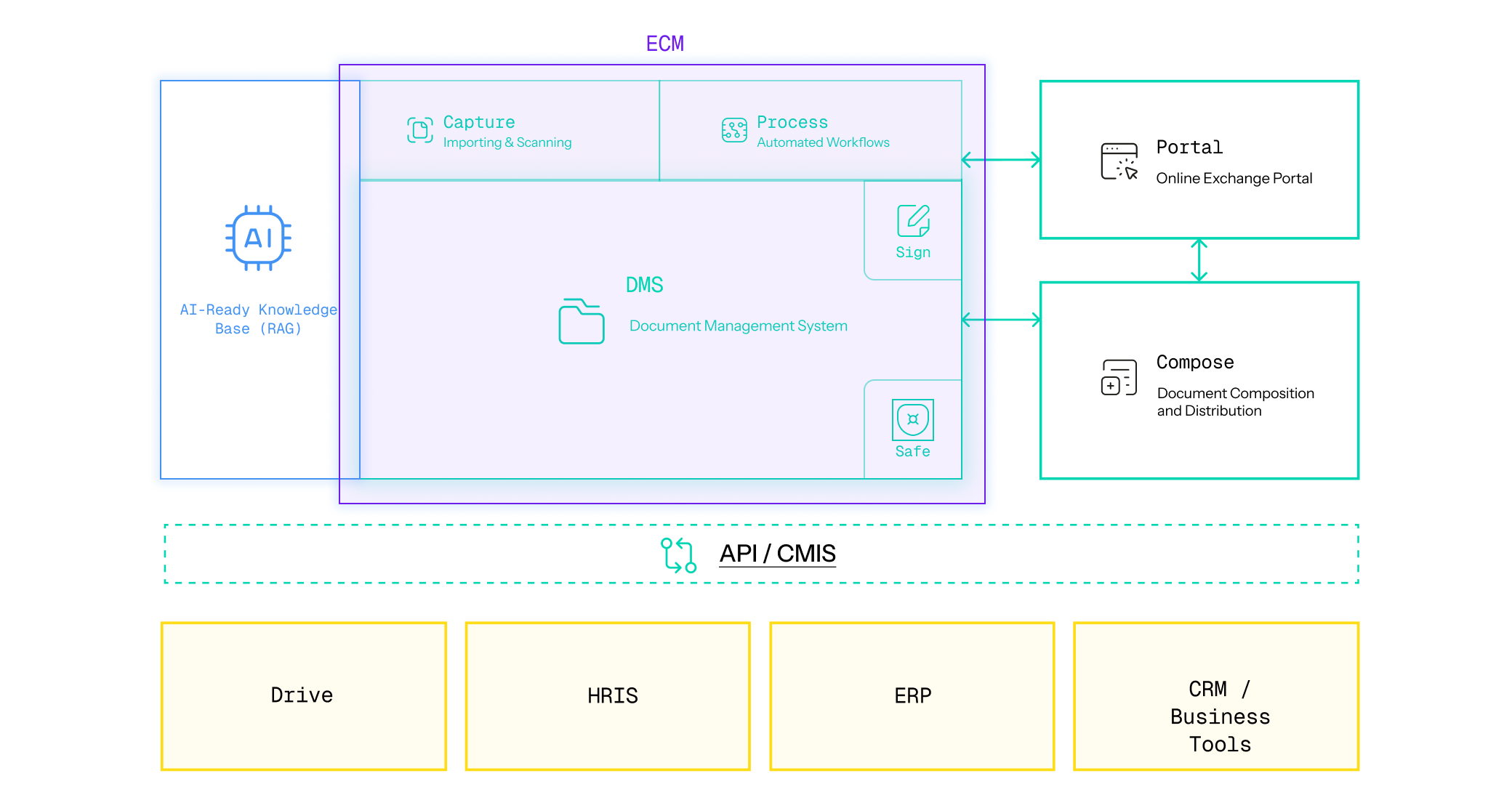
Introduction — Why is there so much confusion between EDM and ECM?
In many organizations, the terms EDM and ECM are often used synonymously. However, they do not refer to the same thing.
This confusion is explained by their proximity: both concern information management, but at different levels.
The EDM manages documents and their life cycle, while ECM includes EDM and adds process management, collaboration, and content governance.
What is the main difference between EDM and ECM?
EDM (Electronic Document Management) and ECM (Enterprise Content Management) share a common objective: to structure, secure and valorize information.
The distinction is due to their scope:
• The EDM/DMS focuses on documents : capture, categorization, sharing, & archiving.
• The ECM manages all Contents, including data, emails and media, integrating processes and adding a collaborative dimension.
In summary, the EDM structures documents, ECM structures information and its use.
The first meets a need for productivity; the second is part of information governance logic.
Discover EDM / DMS
What is Electronic Document Management?
DMS/EDM is now an essential element of the information system of companies and administrations.
It centralizes, classifies, shares and archives documents to make them accessible, traceable and compliant with regulatory requirements.
The purpose of an EDM solution is to structure the organization's information by setting up a standard filing format, facilitating information retrieval with secure access.
Thanks to Electronic Document Management, team collaboration is optimized with a single point of access to information.
84% of professionals say they waste time looking for information, and 93% want a single point of access for their documents
(ArchiMag/SERDA studies).
EDM software efficiently integrates with business tools and the global IS to become the central document repository of the organization. It eliminates duplicates and contradictory versions, provides access control and complete traceability, allowing instant searching and mobile access plus legal archiving and compliance with the GDPR.
Examples of EDM software: two concrete cases
1. In the public service: centralizing and securing HR files
The Loire-Atlantique Department has replaced an outdated EDM with a modern solution integrated into its HR system: Efalia Doc/Efalia ECM.
More than 700,000 agent documents have been migrated with a complete recovery of the history and fine management of access rights.
Access to files is now 100% dematerialized, with division by territory and by function, guaranteeing security, compliance, and service continuity.
2. In the private sector: automating HR document management
Colas Digital, a major construction group, has modernised its HR document management using Efalia Doc/Efalia ECM.
The project has made it possible to automate the creation, filing and archiving thousands of HR documents, including pay slips and contracts, with 35,000 employees benefiting from the solution.
The documentary chain, now integrated and secure, has allowed a considerable time savings And a better data reliability.
Discover ECM
What is Enterprise Content Management?
The ECM (Enterprise Content Management) extends the domain of EDM.
It allows you to manage all content, whether structured (databases) or not (emails, videos, reports, forms).
The ECM centralizes this information in a single repository, while automating the business processes that exploit them.
It is based on four pillars:
- Document management : capture, indexing, archiving.
- Process automation (BPM): validation, distribution, archiving.
- Collaboration : sharing content between teams.
- Governance : traceability, compliance and information security.
ECM provides increased data reliability, harmonizes practices And of reduces manual tasks with intelligent workflows.
Example of an ECM : Enterprise Content Management
A national road transport company: Mauffrey, has automated the management of its supplier invoices with Efalia ECM.
Documents are captured, indexed, and validated automatically according to standardized rules.
The Purchasing, Accounting and Operations departments now share a single repository, guaranteeing traceability, compliance and horizontal collaboration.
This automation made it possible to reduce processing times, minimize errors And of standardize practices at the group level.
From EDM to ECM: a natural evolution
EDM and ECM are not opposed: they represent two stages in the same journey.
EDM (electronic document management) lays the foundations: centralization, access, security; while ECM extends its scope to integrate process management, the collaboration And the valorization of data.
The most mature organizations are evolving their EDM towards a real ECM system for orchestrate the entire information cycle.
In the public as well as in the private sector, this evolution meets the same requirement: managing information assets and making one collective performance lever.
EDM /DMS today, ECM tomorrow: a natural continuity towards the control and valorization of information.



